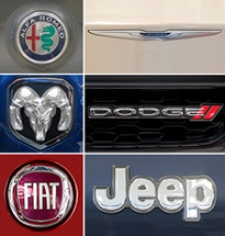
Corrosion Protection Guidelines: FCA/Stellantis
- Posted on 15 June 2017
A key factor in collision repair is making long-lasting repairs. When a vehicle is repaired, many areas of corrosion protection are disturbed. This creates corrosion hot spots that left untreated will lead to corrosion and potentially a repair failure. However, there are certain precautions that can be taken to safely and properly restore the corrosion protection throughout the repair process. OEMs often give specifications on restoring corrosion protection. These specifications generally include seam sealer, adhesives, foam fillers, and cavity waxes. Let’s take a look at what FCA/Stellantis says.
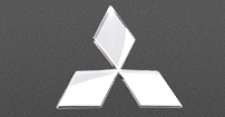
Structural Sectioning Procedures: Mitsubishi
- Posted on 14 June 2017
Ask I-CAR receives many technical inquiries referring to sectioning. The collision repair industry wants to know where can you section, does the OEM have a sectioning procedure, and where can I find the sectioning procedure? Most OEMs allow sectioning to outer body panels and the front and rear rails. Sectioning reinforcements is not as common, as most reinforcements are replaced at factory seams.
Parts are made from various materials including HSS, UHSS, aluminum, and carbon fiber. These parts also have complex designs to collapse or transfer collision forces in a specific manner. Introducing a sectioning joint to many of these parts will alter how the part reacts to those collision forces. For this reason, sectioning a part is only allowed if supported by vehicle maker repair information. Let’s see what Mitsubishi says about structural sectioning.
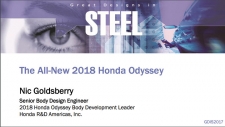
Great Designs in Steel 2017 Presentations: A Closer Look - 2018 Honda Odyssey
- Posted on 13 June 2017
In case you missed it, Nic Goldsberry from Honda R&D America Inc. presented The All-New 2018 Honda Odyssey at Great Designs in Steel 2017.
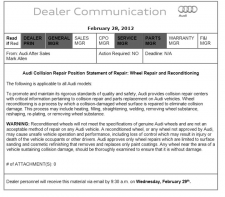
Audi Position Statement: Wheel Repair and Reconditioning
- Posted on 12 June 2017
The wheels on the vehicle are damaged, what type of repairs can be done, if any? And, is it okay to use a reconditioned wheel? Let’s see what Audi has to say.
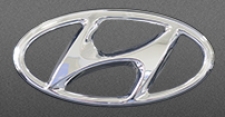
Additional Calibration Requirements: Hyundai
- Posted on 09 June 2017
The addition of the OEM Calibration Requirements Search to the RTS portal was a big step for the collision industry. While this new feature has been well received, there has been some confusion about what is included in the search tool. The OEM Calibration Requirements Search is designed to provide information on the calibration requirements that are needed for vehicles equipped with advanced driver assistance systems (ADAS). This includes systems such as adaptive cruise control, lane keep assist, and collision braking.
It does not include occupant classification systems (OCS), steering angle sensors, battery disconnects, or other calibrations/initializations required, when not related directly to ADAS. Let’s take a look at what additional items may require calibrations/initializations on Hyundai vehicles.
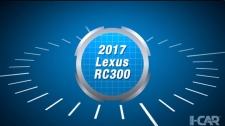
I-CAR 360: Lexus RC300 Video Now Available
- Posted on 08 June 2017
The I-CAR Repairability Technical Support (RTS) team recently developed a new I-CAR 360 video on the 2017 Lexus RC300. The video provides a 360 tour around the new RC300. Let’s take a look.
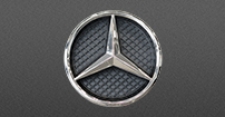
Corrosion Protection Guidelines: Mercedes-Benz
- Posted on 07 June 2017
A key factor in collision repair is making long-lasting repairs. When a vehicle is repaired, many areas of corrosion protection are disturbed. This creates corrosion hot spots that left untreated will lead to corrosion and potentially a repair failure. However, there are certain precautions that can be taken to safely and properly restore the corrosion protection throughout the repair process. OEMs often give specifications on restoring corrosion protection. These specifications generally include seam sealer, adhesives, foam fillers, and cavity waxes. Let’s take a look at what Mercedes-Benz says.
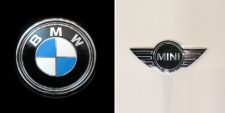
Structural Sectioning Procedures: BMW/Mini
- Posted on 06 June 2017
Ask I-CAR receives many technical inquiries referring to sectioning. The collision repair industry wants to know where can you section, does the OEM have a sectioning procedure, and where can I find the sectioning procedure? Most OEMs allow sectioning to outer body panels and the front and rear rails. Sectioning reinforcements is not as common, as most reinforcements are replaced at factory seams.
Parts are made from various materials including HSS, UHSS, aluminum, and carbon fiber. These parts also have complex designs to collapse or transfer collision forces in a specific manner. Introducing a sectioning joint to many of these parts will alter how the part reacts to those collision forces. For this reason, sectioning a part is only allowed if supported by vehicle maker repair information. Let’s see what BMW/Mini says about structural sectioning.
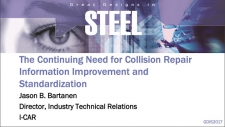
Great Designs in Steel 2017 Presentations: The Continuing Need for Collision Repair Information Improvement and Standardization
- Posted on 05 June 2017
In case you missed it, Jason Bartanen from I-CAR presented: The Continuing Need for Collision Repair Information Improvement and Standardization.
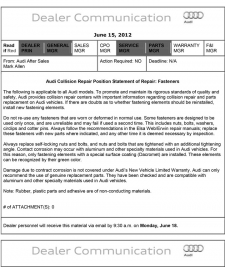
Audi Position Statement: Fasteners
- Posted on 02 June 2017
To replace or not to replace a fastener is often a question asked during the collision repair process. Let’s see what Audi has to say.
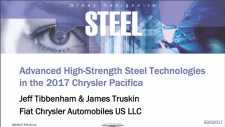
Great Designs in Steel 2017 Presentations: A Closer Look - 2017 Chrysler Pacifica
- Posted on 01 June 2017
In case you missed it, Jeff Tibbenham and James Truskin from FCA/Stellantis presented Advanced High-Strength Steel Technologies in the 2017 Chrysler Pacifica at Great Designs in Steel 2017.
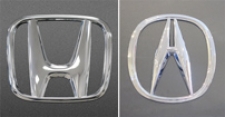
Additional Calibration Requirements: Honda/Acura
- Posted on 01 June 2017
The addition of the OEM Calibration Requirements Search to the RTS portal was a big step for the collision industry. While this new feature has been well received, there has been some confusion about what is included in the search tool. OEM Calibration Requirements Search is designed to provide information on the calibration requirements that are needed for vehicles equipped with advanced driver assistance systems (ADAS). This includes systems such as adaptive cruise control, lane keep assist, and collision braking.
It does not include occupant classification systems (OCS), steering angle sensors, battery disconnects, or other calibrations/initializations required, when not related directly to ADAS. Let’s take a look at what additional items may require calibrations/initializations on Honda/Acura vehicles.
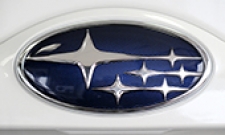
Corrosion Protection Guidelines: Subaru
- Posted on 31 May 2017
A key factor in collision repair is making long-lasting repairs. When a vehicle is repaired, many areas of corrosion protection are disturbed. This creates corrosion hot spots that left untreated will lead to corrosion and potentially a repair failure. However, there are certain precautions that can be taken to safely and properly restore the corrosion protection throughout the repair process. OEMs often give specifications on restoring corrosion protection. These specifications generally include seam sealer, adhesives, foam fillers, and cavity waxes. Let’s take a look at what Subaru says.
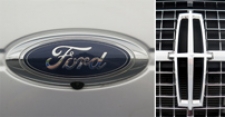
Additional Calibration Requirements: Ford/Lincoln
- Posted on 26 May 2017
The addition of the OEM Calibration Requirements Search to the RTS portal was a big step for the collision industry. While this new feature has been well received, there has been some confusion about what is included in the search tool. The OEM Calibration Requirements Search is designed to provide information on the calibration requirements that are needed for vehicles equipped with advanced driver assistance systems (ADAS). This includes systems such as adaptive cruise control, lane keep assist, and collision braking.
It does not include occupant classification systems (OCS), steering angle sensors, battery disconnects, or other calibrations/initializations required, when not related directly to ADAS. Let’s take a look at what additional items may require calibrations/initializations on Ford/Lincoln vehicles.
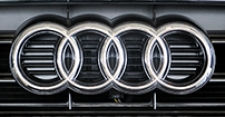
Structural Sectioning Procedures: Audi
- Posted on 26 May 2017
Ask I-CAR receives many technical inquiries referring to sectioning. The collision repair industry wants to know where can you section, does the OEM have a sectioning procedure, and where can I find the sectioning procedure? Most OEMs allow sectioning to outer body panels and the front and rear rails. Sectioning reinforcements is not as common, as most reinforcements are replaced at factory seams.
Parts are made from various materials including HSS, UHSS, aluminum, and carbon fiber. These parts also have complex designs to collapse or transfer collision forces in a specific manner. Introducing a sectioning joint to many of these parts will alter how the part reacts to those collision forces. For this reason, sectioning a part is only allowed if supported by vehicle maker repair information. Let’s see what Audi says about structural sectioning.
-
Toyota/Lexus/Scion Position Statement: Pre- and Post-Repair System Scanning
Thursday, 28 July 2016
As the industry continues to ask if pre- and post-repair system scanning is necessary, Toyota/Lexus/Scion provides their answer.
-
Pre- and Post-Repair System Scanning Position Statements
Wednesday, 9 January 2019
Are you wondering if a particular OEM or organization has a published position statement on pre-repair and post-repair scanning? We have compiled a list of most of the position statements on the...
-
ADAS, Calibration, And Scanning Article Hotspot
Monday, 14 January 2019
Since advanced driver assistance systems (ADAS), scanning, and calibration first started becoming relevant, members of the collision repair industry have required as much knowledge as possible on...
-
Honda/Acura Position Statement: Pre- and Post-Repair System Scanning - UPDATE
Wednesday, 22 May 2019
Honda /Acura has updated their position statement on pre- and post-repair scanning to give more clarification on what is expected for scanning.
-
Restraints Wiring Repairs
Monday, 23 May 2016
Over the past few months, we've been sharing OEM position statements on restraints wiring repairs. Now we're bringing them all together in one place for easy reference.
-
Typical Calibration Requirements For Blind Spot Sensors
Wednesday, 19 October 2016
Technicians should be aware of what’s required to keep advanced driver assistance systems (ADAS) running safely after a collision. Whether that be aiming a camera, which can cause a system to not...
-
General Motors Position Statement: Pre- and Post-Repair System Scanning
Friday, 21 October 2016
As the industry continues to ask, are pre- and post-repair scans necessary, General Motors provides their answer.
-
Typical Calibration Requirements For Forward Radar Sensors
Wednesday, 12 October 2016
Technicians should be aware of what’s required to keep advanced driver assistance systems (ADAS) running safely after a collision. Whether that be aiming a camera, which can cause a system to not...
-
FCA/Stellantis Position Statement: Pre- and Post-Repair System Scanning
Thursday, 9 June 2016
FCA/Stellantis has released a position statement related to pre- and post-repair system scanning.
-
Quickly Identifying Outer Quarter Panels w/Rolled Hem Flanges
Monday, 5 March 2018
The I-CAR best practice article, Recycled Outer Quarter Panels w/Rolled Hem Flanges has gotten a lot of interest from the collision repair industry. It’s important to know which vehicles are...
-
I-CAR Repairers Realm: Paint Color Matching Challenges - Coming Soon
Friday, 17 May 2024
I-CAR is having a discussion on the challenges of paint color matching.
-
Honda Has Released The 2024 Prologue Body Repair News
Wednesday, 15 May 2024
Honda has released a Body Repair News bulletin for the 2024 Honda Prologue. This document provides relevant information at a glance for this new model which was co-developed with General Motors (GM).
-
Acura Has Released The New 2024 ZDX Body Repair News
Wednesday, 15 May 2024
Acura has released a Body Repair News bulletin for the 2024 Acura ZDX. This document provides relevant information at a glance for this new model which was co-developed with General Motors (GM).
-
GM Repair Insights: Spring 2024
Monday, 13 May 2024
The spring edition of General Motors (GM) Repair Insights magazine is now available.
-
OEM Linking Pin: Kia Outer Uniside Sectioning
Friday, 10 May 2024
As part of the I-CAR Repairability Technical Support (RTS) OEM linking pin activity, we are helping to connect the collision repair industry to the vehicle makers. We’ve had technical inquiries that...
-
Calibration Research Tips: Nissan/INFINITI - Bumper Cover Replaced With Sonar Sensor Holder
Thursday, 9 May 2024
While searching for information on advanced driver assistance systems (ADAS) on an OEM repair information site, you may come across unique calibration procedures or events. These events can vary by...
-
I-CAR Just In Time: Lineman’s Glove Testing
Tuesday, 7 May 2024
Sometimes seeing is understanding, that’s why I-CAR's technical team created the Just in Time video series to guide you through a variety of collision repair topics from ADAS and EVs to repair tips...
-
OEM Emergency Response Guides: BMW/Mini
Thursday, 2 May 2024
Are you looking for OEM emergency response guides (ERGs)? The Repairability Technical Support (RTS) team has located these guides and either houses them on the RTS website, provides links to...
-
I-CAR Ford Mach-E Collision Repair And Electromechanical Repair Courses
Wednesday, 1 May 2024
I-CAR has developed courses for the Ford Mustang Mach-E, a general collision repair overview and a course that covers electromechanical repair.
-
I-CAR Repairers Realm: Controlling Static During Refinishing - Now Available
Tuesday, 30 April 2024
I-CAR had a discussion on controlling static during refinishing.
- 2024
- May 2024 (9)
- April 2024 (12)
- March 2024 (12)
- February 2024 (12)
- January 2024 (10)
- 2023
- December 2023 (8)
- November 2023 (13)
- October 2023 (11)
- September 2023 (11)
- August 2023 (12)
- July 2023 (9)
- June 2023 (12)
- May 2023 (12)
- April 2023 (11)
- March 2023 (12)
- February 2023 (10)
- January 2023 (11)
- 2022
- December 2022 (11)
- November 2022 (12)
- October 2022 (11)
- September 2022 (13)
- August 2022 (11)
- July 2022 (10)
- June 2022 (13)
- May 2022 (11)
- April 2022 (12)
- March 2022 (10)
- February 2022 (11)
- January 2022 (13)
- 2021
- December 2021 (13)
- November 2021 (12)
- October 2021 (13)
- September 2021 (15)
- August 2021 (12)
- July 2021 (15)
- June 2021 (17)
- May 2021 (14)
- April 2021 (14)
- March 2021 (21)
- February 2021 (15)
- January 2021 (14)
- 2020
- December 2020 (13)
- November 2020 (17)
- October 2020 (12)
- September 2020 (14)
- August 2020 (11)
- July 2020 (18)
- June 2020 (16)
- May 2020 (14)
- April 2020 (20)
- March 2020 (12)
- February 2020 (14)
- January 2020 (14)
- 2019
- December 2019 (13)
- November 2019 (19)
- October 2019 (25)
- September 2019 (20)
- August 2019 (22)
- July 2019 (23)
- June 2019 (21)
- May 2019 (19)
- April 2019 (20)
- March 2019 (21)
- February 2019 (21)
- January 2019 (18)
- 2018
- December 2018 (19)
- November 2018 (19)
- October 2018 (17)
- September 2018 (16)
- August 2018 (21)
- July 2018 (20)
- June 2018 (21)
- May 2018 (17)
- April 2018 (19)
- March 2018 (22)
- February 2018 (16)
- January 2018 (20)
- 2017
- December 2017 (13)
- November 2017 (15)
- October 2017 (19)
- September 2017 (20)
- August 2017 (20)
- July 2017 (18)
- June 2017 (23)
- May 2017 (20)
- April 2017 (14)
- March 2017 (18)
- February 2017 (11)
- January 2017 (13)
- 2016
- December 2016 (9)
- November 2016 (14)
- October 2016 (21)
- September 2016 (11)
- August 2016 (11)
- July 2016 (8)
- June 2016 (13)
- May 2016 (10)
- April 2016 (11)
- March 2016 (12)
- February 2016 (11)
- January 2016 (8)
- 2015
- December 2015 (9)
- November 2015 (8)
- October 2015 (9)
- September 2015 (7)
- August 2015 (11)
- July 2015 (10)
- June 2015 (8)
- May 2015 (8)
- April 2015 (9)
- March 2015 (8)
- February 2015 (9)
- January 2015 (10)
- 2014
- December 2014 (12)
- November 2014 (7)
- October 2014 (11)
- September 2014 (10)
- August 2014 (9)
- July 2014 (12)
- June 2014 (9)
- May 2014 (14)
- April 2014 (9)
- March 2014 (6)
- February 2014 (1)
- January 2014 (27)










